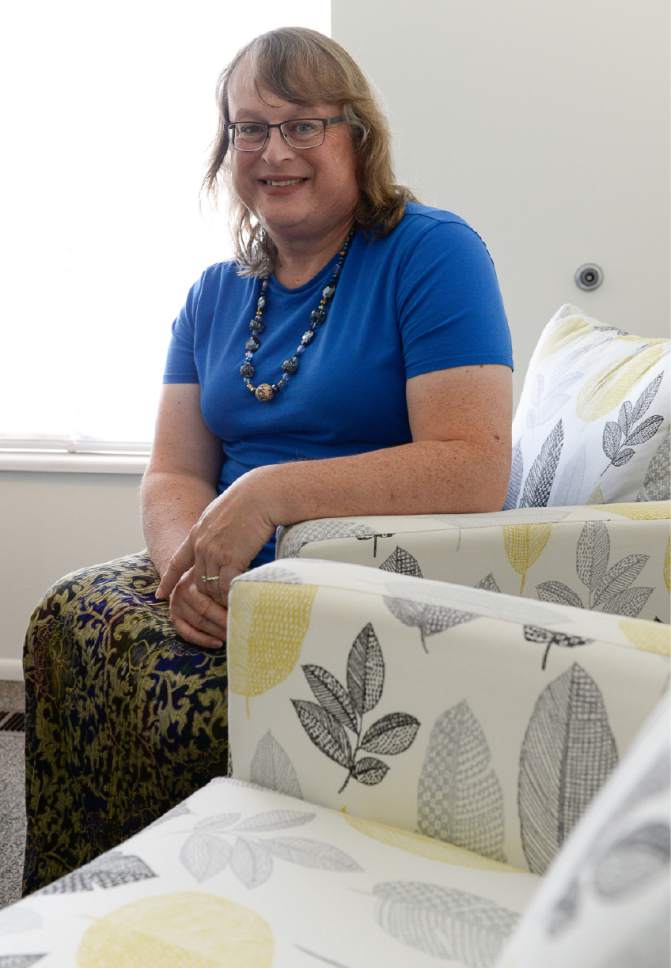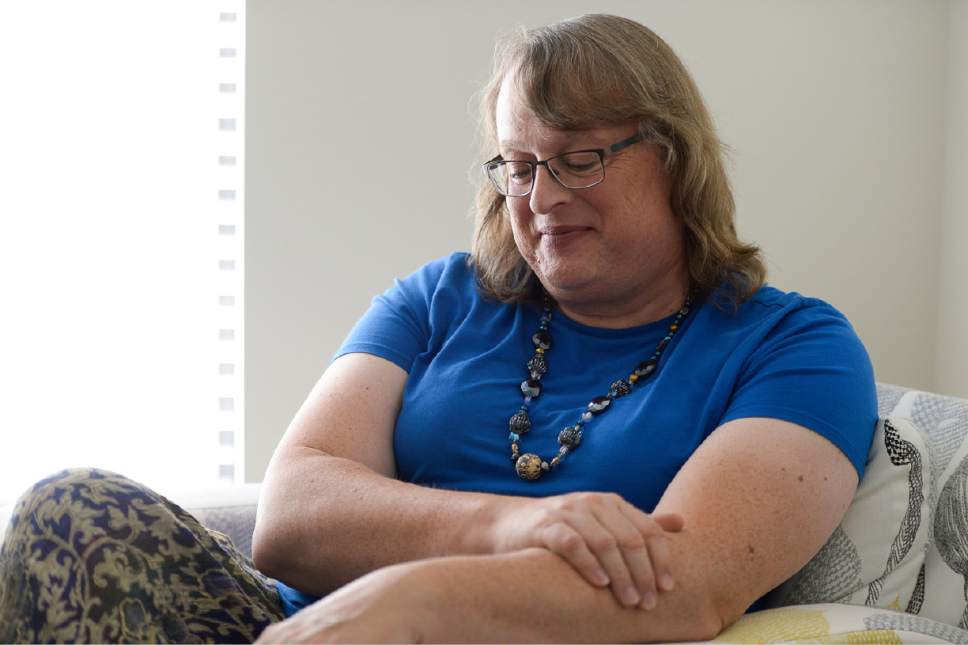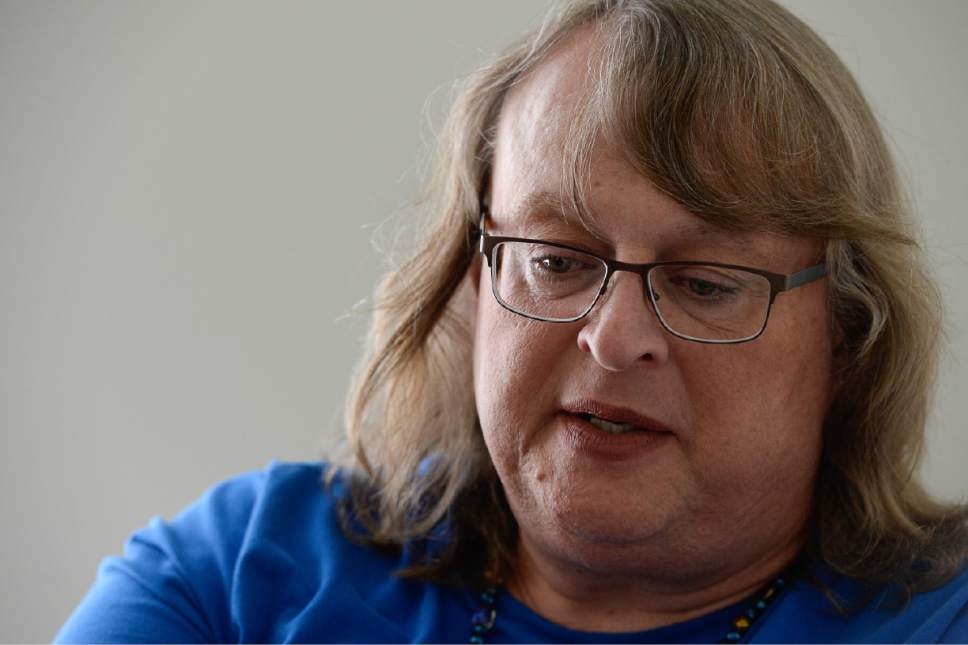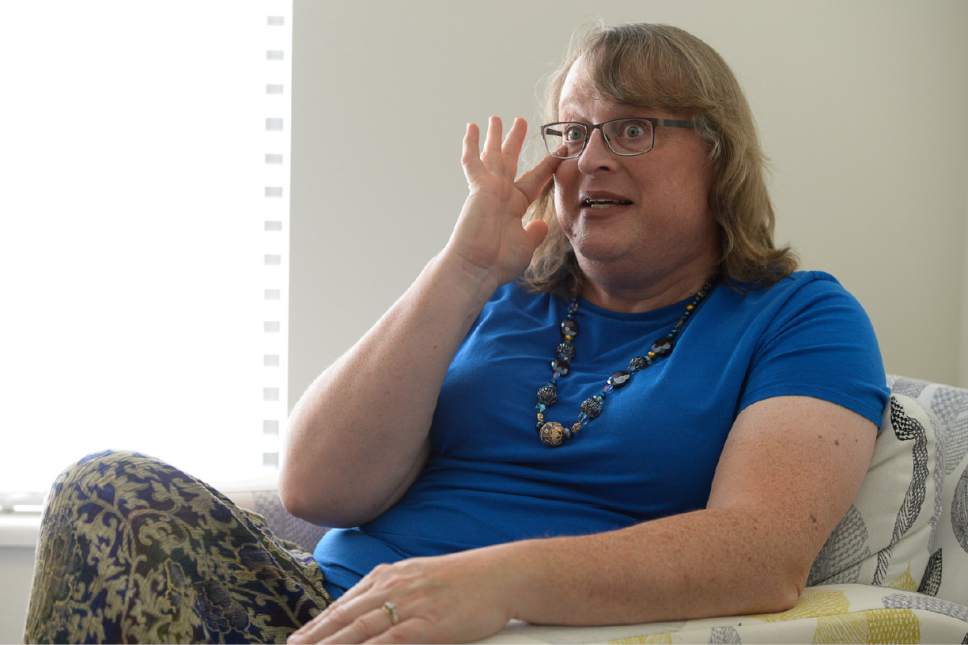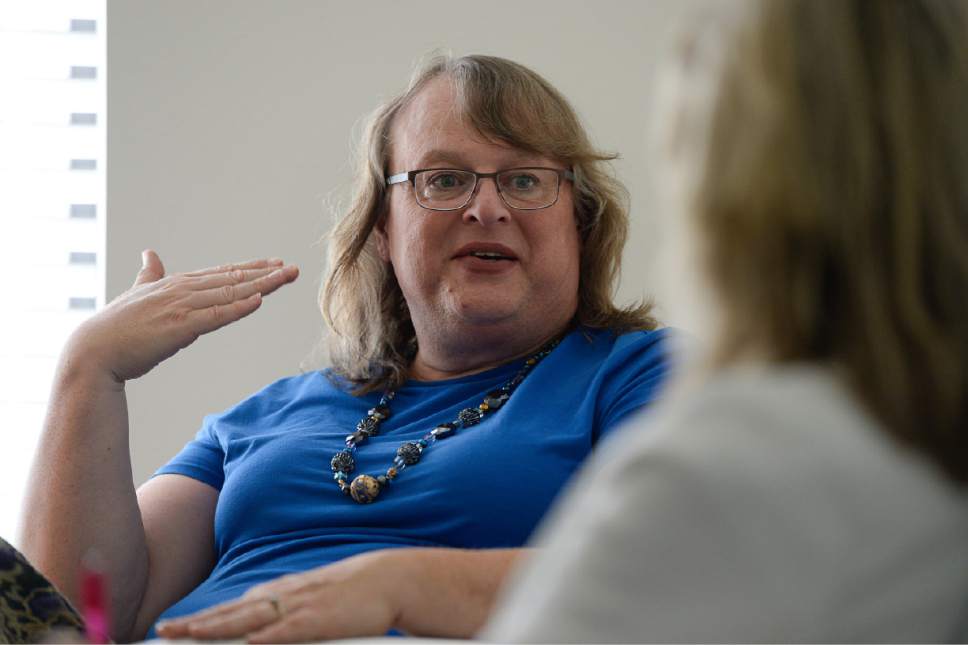This is an archived article that was published on sltrib.com in 2017, and information in the article may be outdated. It is provided only for personal research purposes and may not be reprinted.
Laurie Lee Hall was excommunicated from the Mormon church for being a woman.
At least, that's how Hall sees it.
The former LDS stake president, who oversaw a group of Mormon congregations in Tooele for eight years and worked as an architect on her faith's most sacred spaces, faced, in her mind, an impossible choice: Either return to living as a man or resign her membership in The Church of Jesus Christ of Latter-day Saints.
Giving up her female identity would cause grave damage to her physical and mental health, Hall says. "And it was not in my heart to resign my membership."
So, on June 4, many of the same men who had served in Tooele's lay leadership with her convened a disciplinary council and deemed her no longer a member of the religion she still loves.
Days later, Hall joined former colleagues in the LDS temple design department on a tour of Provo's newly expanded Missionary Training Center, her final project for the church.
Hall was introduced to the group — which included LDS designers, officials, leaders and missionaries — as one of the MTC makeover's chief architects. She felt honored and respected — even in a dress.
Such acceptance "did my heart good," the 56-year-old Hall recalls in a Salt Lake Tribune interview. "It was a counterpoint to my excommunication."
That public moment encapsulated her decadeslong journey in Mormonism and the emergence of her female self from its hiding place.
But it was a long time coming.
—
Mission, marriage and motives • In her childhood and teen years as an artistic, sensitive boy in Massachusetts, Hall faced the usual round of taunts, slurs and bullying. Failing to project the standard high school tough guy image, she would go home every night and don girl clothes.
"I was desperate to become the young woman my body was telling me I would never be," Hall told "Mormon Stories" podcaster John Dehlin in a Facebook Live interview Tuesday.
She was both ashamed and terrified at the possibility that anyone would discover her secret.
Going away to college at Rensselaer Polytechnic Institute in upstate New York seemed a chance to bury that female identity forever.
There, she met Mormonism in the form of a fellow freshman, who gave her a copy of the faith's foundational scripture, the Book of Mormon. While recovering from an illness at the school's infirmary, she told Dehlin, she devoured the book and experienced a spiritual witness of its veracity.
"Once I know a truth," she says, "I need to act upon it."
She converted, hoping that immersing herself in the new faith would help "put that gender thing away." Within two years, she was serving an LDS mission in Argentina. (At the time, young men were called for only 18 months, so, she points out, she served the same length as a "sister missionary" does today.)
Upon returning to her schooling in architecture, Hall met her future wife in a Mormon ward near Troy, N.Y. The couple married in 1985 in the Emerald City-like LDS temple in Washington, D.C.
She loved her spouse completely, but shared nothing of her identity struggles — there were no words for it then — portraying herself as best she could as male.
The couple quickly had four children. Though Hall believed marriage and family would help "cure" her feminine feelings, they did the opposite.
"Living with another woman made it harder for me," Hall tells The Tribune. "She was living the life I wanted to live, doing what I wanted to do — while I had the challenge of living as a male for her."
Hall was so successful in that masquerade that her wife had no idea what loomed.
—
Moving here, moving up • Eventually, the stress of living a lie took an emotional and physical toll on Hall. In early 1996, she quit her job at an architectural firm in Albany and fell into a deep depression, becoming suicidal and unable to function.
What kept the then-30-something from ending her life, she told Dehlin, was the knowledge that "my wife and God loved me — that was enough to realize there was hope."
Hall found her way to a therapist, who urged a change in location or career or both, but she never let slip the real cause of her distress.
Later that year, the family moved to Utah, where Hall found architectural work at the LDS Church, namely on new buildings at Welfare Square in west Salt Lake City. Her training and skills continued to move her up the church's career ladder, finally landing her as a chief architect in the temple construction and design department. In that capacity, she worked on nearly 40 temples, including one of her favorites: the reconstructed Provo City Center Temple.
At the same time, Hall climbed to ecclesiastical positions. Soon after arriving in the Beehive State, Hall became a Mormon bishop, the lay leader of a congregation in Tooele, and later rose to the area's stake president.
Those religious responsibilities, combined with family obligations (during these years the couple adopted a daughter from Ukraine) and a demanding workload, helped to keep Hall's real identity feelings under wraps. But not forever.
—
Awakening • In fall 2010, Hall found herself in the hospital for 11 days with what finally was diagnosed as a collapsed colon. It took awhile to figure out what was wrong and even longer to heal.
She lay in bed, pondering her path, personally and professionally, and discovered "a lot of things I saw in my life that I didn't like."
Mostly male things.
Hall left the hospital determined to "get in contact with my core self," she recalls, "which included allowing the gender issue to come out of the box."
She explored her questions and learned the words to describe what she had felt since childhood: gender dysphoria.
Within a year, Hall knew that she was Laurie and had to live that truth. On her knees in prayer in November 2011, Hall felt heavenly reassurance in her female identity.
She was not asking God if she was a woman, but was speaking to the divine for the first time as a woman, and God was answering her as that person.
Now it was time to tell her wife, who had been — and still is — her first love and best friend.
"It broke her heart to learn the news," Hall says, tears welling with the memory. "It dashed her dream of the traditional family both here and hereafter — not something we completely understand but extremely troubling to her."
Hall's wife saw for the first time the excruciating pain her spouse had endured for much of their marriage — the inner conflicts, the suicidal thoughts, the agony of discovery, the mustering of courage.
Then came the inescapable need for Hall to become, at last, the woman of her dreams. She added a feminine touch to her style, let her hair grow and within a few years started hormone-replacement therapy.
Together, the couple told their children. All but one accepted their dad as a woman.
It was time to be authentic, Hall says, or die.
—
Living her truth • When Hall's LDS leaders learned of her gender-identity issues in 2012, she was quietly released as stake president. She had served for eight years so it didn't raise any suspicions.
But she had felt herself evolving during her years of in the all-male Mormon priesthood leadership.
Hall had assigned herself to work with the all-women Relief Society officers, she notes, and "they were quite delighted with the attention they got from a senior leader in the stake."
As she got in touch with her feminine side, she says, "I was changing my attitude and heart, and the way I treated people and problems. [I discovered] aspects of my male persona that I just really didn't like."
Four years after being released from that post, Hall no longer could endure the dissonance. She came out to her LDS bishop in the same ward she had once led. The new bishop was open and accepting. Together, Hall says, they hatched a plan to tell the ward.
In July 2016 — on the first Sunday during a service Mormons usually dedicate to impromptu speeches by fellow members — the bishop arose and addressed the crowd. He spoke about support and affirmation for those who are different, including transgender believers.
Next up came Hall, dressed as the man her ward members thought she was. She strode confidently to the podium and told her story, she says, echoing the bishop's call for compassion and understanding.
"I enjoyed the long walk back to the sixth row," she says with some sarcasm. She wondered how many of her listeners would come to the adult Sunday school class she was teaching.
"Some did, some didn't, and some came who had not come before," Hall reports. "Some told me it was the most spiritual meeting they had ever attended."
She continued to attend weekly worship with her wife and now-teen daughter, all the while feeling at home in a more feminine appearance and attire.
"It was a great joy to live authentically," Hall says, "reaching out to others who might be on the fringe as well."
All was well until last month, when she was stripped of her Mormon membership.
LDS Church spokesman Eric Hawkins declined to comment on the case, noting that disciplinary actions are local decisions and confidential.
For its part, the faith does not take a clear-cut stance on transgender persons. The church's official guidelines state that "sex-reassignment surgery," which Hall has no plans to undergo, "may be cause for formal church discipline."
In September 2016, Hall retired as a church architect and, in January, established Pathways, a professional coaching and business development consulting practice. She also founded the Families and Gender Variance Project, which seeks to strengthen the love, empathy and communication between gender variant persons and their families.
Through it all, her faith in the core principles of Mormonism — a loving God, the ministry of Jesus Christ, his atonement and resurrection, and the influence of the Holy Ghost — has never wavered.
She experiences such spirituality daily, she says, while remaining married and going to church every week.
Naturally, Hall is "disappointed with where the church is presently [on transgender issues]," she says, "and would love to see a greater level of understanding for people in my situation."
Would she consider being rebaptized into the faith that rejected her?
Yes, absolutely, Hall says, but she hopes next time she goes down into the water as a woman.
Twitter: @religiongal



